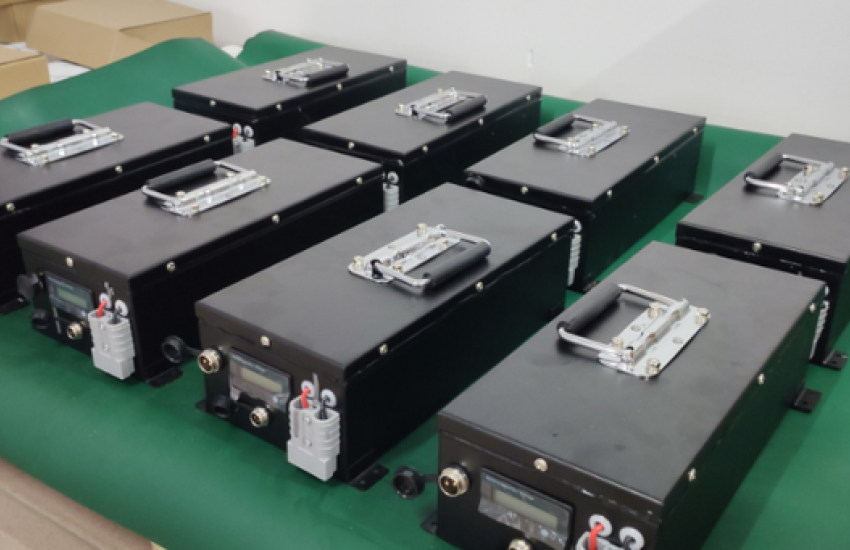Advantages and disadvantages of cathode materials for lithium iron phosphate batteries
Advantages and disadvantages of cathode materials for lithium iron phosphate batteries. Lithium iron phosphate cathode material is considered to be one of the most promising cathode materials for lithium ion batteries due to its excellent electrochemical properties. The cathode materials of lithium iron phosphate batteries mainly include lithium cobalt oxide, lithium manganate, lithium nickel oxide, ternary materials, lithium iron phosphate, etc. Among them, lithium cobalt oxide is the cathode material used in the vast majority of lithium-ion batteries.
The main constituent materials of lithium batteries include electrolytes, separator materials, positive and negative electrode materials, etc. The cathode material occupies a large proportion, because the performance of the cathode material directly affects the performance of the lithium-ion battery, and its cost also directly determines the cost of the battery. At present, the lithium battery cathode materials that have been marketed include lithium cobalt oxide, lithium manganate, lithium iron phosphate batteries and ternary materials.
LiFePO4 battery is a new type of lithium-ion battery electrode material, a new generation of green high-energy batteries with excellent performance, and has become one of the focuses of high-tech development. It is characterized by high voltage, high capacity, low consumption, no memory effect, small size, low internal resistance, less self-discharge, more cycles, low price, no toxicity, and no environmental pollution. Because of the above characteristics, lithium iron phosphate batteries have been applied to many civilian and special fields such as mobile phones, notebook computers, video cameras, and digital cameras. Countries around the world are racing to realize industrialized production.
Advantages of cathode materials for lithium iron phosphate batteries
1. High energy density: its theoretical specific capacity is 170mAh/g, and the actual specific capacity of the product can exceed 140mAh/g (0.2C, 25°C);
2. Safe and pollution-free: it is the safest cathode material for lithium-ion batteries at present; it does not contain any heavy metal elements that are harmful to the human body; it complies with European RoHS regulations and is an absolute green battery certificate;
3. Long service life: under 100% DOD conditions, it can be charged and discharged more than 2000 times; the service life of lithium iron phosphate battery is closely related to its use temperature. If the use temperature is too low or too high, the charging and discharging process and the use process will cause great damage. bad hidden dangers;
4. Charging performance: Lithium battery with lithium iron phosphate cathode material can be charged at a high rate, and the battery can be fully charged within 1 hour at the fastest;
5. Light weight: The volume of the lithium iron phosphate battery with the same specification and capacity is 2/3 of the volume of the lead-acid battery, and the weight is 1/3 of the lead-acid battery.
As the cathode material of lithium battery, lithium iron phosphate battery is currently the safest cathode material for lithium ion battery. Although the tap density is low and the voltage platform is low, due to the safety and stability of the cathode material, it can be abused in extrusion, overcharge, short circuit, etc. Due to its safety and stability, lithium iron phosphate batteries have become an important development direction of lithium-ion power batteries.
Disadvantages of cathode materials for lithium iron phosphate batteries
1. Poor conductivity. This question is its most crucial question. The reason why lithium iron phosphate batteries have not been widely used is a major problem. However, this problem can be solved perfectly now: that is to add C or other conductive agents. Laboratory reports can achieve a specific capacity of more than 160mAh/g.
2. The tap density is low. Generally, it can only reach 1.3-1.5g/ml, and the low tap density can be said to be the biggest disadvantage of lithium iron phosphate batteries. This shortcoming determines that it has no advantage in small batteries such as mobile phone batteries. Even if it has low cost, good safety performance, good stability and high cycle times, if the volume is too large, it can only replace lithium cobalt oxide in a small amount. This shortcoming will not be prominent in the power battery. Therefore, lithium iron phosphate is mainly used to make power batteries.




